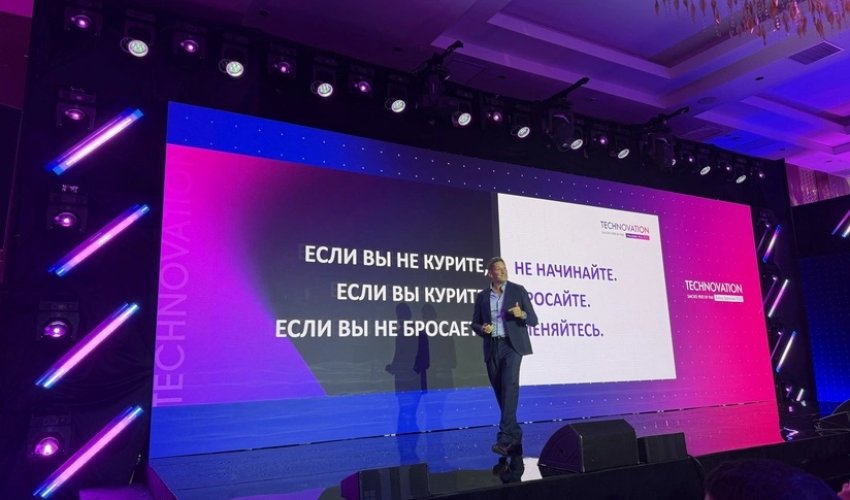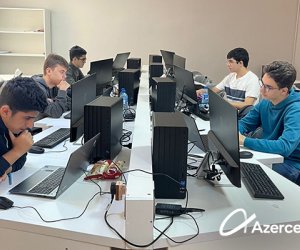Tommaso Di Giovanni: Consumers should receive full information about smoke-free products - INTERVIEW

An international conference called Technovation was held in Astana, organized by Philip Morris International (PMI), focusing on smoke-free alternatives to smoking. The organizers believe that by offering smokers scientifically backed and less harmful alternatives to combustible tobacco, humanity can achieve a completely smoke-free future. We spoke with PMI's Vice President of Communications and Engagement, Tommaso Di Giovanni, about his vision for how smokers should quit smoking entirely or, if they continue using nicotine - change to less harmful alternatives.
- Tommaso, your company actively promotes the idea of transformation toward aN.Tebrizli "smoke-free future." What's the situation in Azerbaijan? What role do you see for yourself in informing Azerbaijani consumers and building trust in smoke-free products over the next 10 years?
- Let me start by saying that Azerbaijan is especially important to us, as it is the first country outside the US where 100% of our revenue comes from smoke-free products. Our next step is to ensure that all consumers who do not quit smoking switch to smoke-free alternatives.
So, as you rightly said, understanding and awareness of the product are key. It's a shared responsibility to build consumer knowledge about smoke-free alternatives so that, with this information, smokers can give up cigarettes.

- How do you think legislation should encourage revolutionary innovations in the tobacco industry while also protecting public health?
- First of all, it's important to note that the legislation regulating tobacco products in various countries was developed many years ago, when modern alternative products didn't even exist. So, updating obsolete legislation is the number one challenge.
However, countries are already introducing various norms into their laws-for example, pre-market review of applications before a product is launched, and regulator oversight after the product is offered to consumers.
Consumers should receive complete information about both the benefits and risks of smoke-free products.
There are different approaches in different countries. For instance, in some, the law allows information to be provided on the packaging and at the point of sale. But there are also countries like the UK and New Zealand, where the government itself disseminates information about the benefits and risks of nicotine-containing products and encourages adoption among those who do not quit cigarettes. In the U.S., information can be shared via social media.
The second point is the availability of nicotine-containing alternatives, so that companies invest in their production and the tax system allows these products to be sold at a price accessible to consumers, signaling that they are a better choice.
The third point is the availability of products at points of sale, where smokers can see and purchase them.
And finally, legislative measures must prevent these products from falling into the hands of minors or non-smokers.

- New Zealand is one of the best examples of how this can work. They have a plan for the country to become smoke-free by 2030. Your product is currently a global leader among smoke-free brands. What's behind this success?
- IQOS is indeed a leading brand. In its category, it holds 70% of the heated tobacco market. It has already surpassed Marlboro in brand value and reached in a decade profitability levels before comparable companies like Tesla and others.
Two factors ensure this success: the promise of improved conditions for smokers and continuous investment in quality and innovation-both in the device and the tobacco products used with it.
IQOS was the first product in its category, giving it a first-mover advantage-we were the first to see what works and what doesn't, and we quickly responded to shortcomings. That's why we maintain a leading position in this segment today.
- Today's consumers expect rapid innovation from manufacturers. Car and phone makers barely keep up with demand, constantly changing design and functionality. What are the expectations for smoke-free products? How well are you meeting them?
- First and foremost, we know what our consumers want-they're familiar to us. The main thing they want is to reduce the risks for their health.
Second, we learned a lot in Japan. Hygiene aspects are very important to people-no smell, no ash. Japanese culture demands that you don't do inconvenience to others. Our IQOS product fits perfectly into that culture.
Third, it's about the quality of electronics, materials, assembly, and of course, impeccable design that appeals to consumers. That's why they love it.
- You've talked about how your company is changing itself, its production, and its consumers to transition to smoke-free smoking. What role do you see for the government and civil society in this transformation?
- They can do a lot. Most importantly, they can ensure continuous public education in accessible language-the best thing a person can do is quit smoking. If they don't, then switching to a safer alternative is better. This message should be clear and come from media, civil society, and other public information channels.

Second, they should create conditions for companies like ours to continuously invest in the production and promotion of innovative products that are a better choice for smokers who do not quit.
- It's been just over a year since you introduced heated tobacco technology to Azerbaijani consumers. What do you see as the future of the smoke-free business in Azerbaijan? How willing are people to switch to less harmful alternatives?
- IQOS has a relatively recent history in Azerbaijan, and we see a very high level of acceptance. We expect that government bodies, academic institutions, and media will increasingly talk about the benefits of switching to smoke-free products, thereby helping Azerbaijani smokers-if they don't quit-to move to better alternatives. N. Tebrizli




































 Photo
Photo 



 Video
Video 

